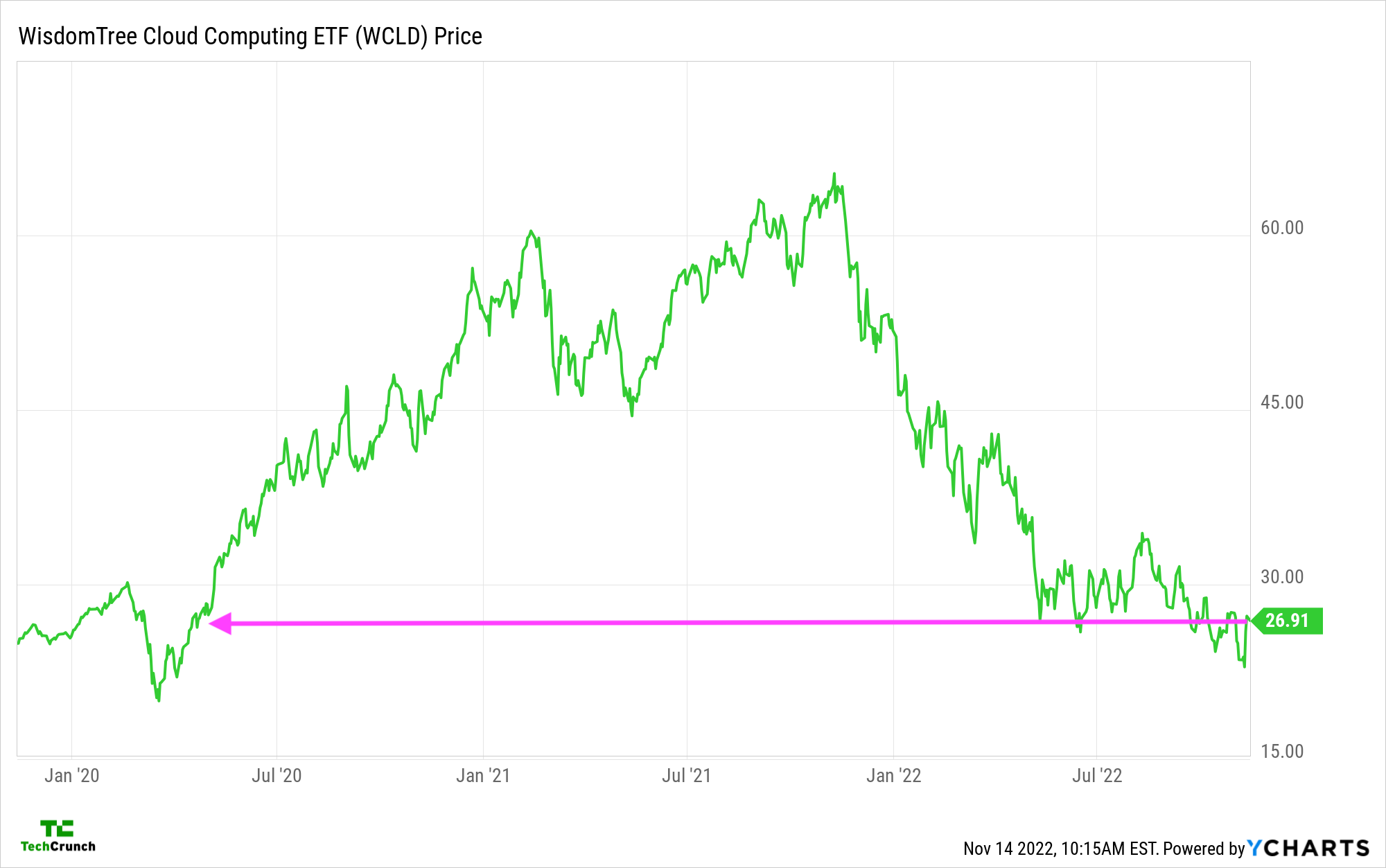What goes up must come down” is a cliche that is also a bastardization of Newton’s third law of motion. It’s also a good reminder that when it looks like the business market has changed fundamentally, we’re often really just seeing a temporary aberration.
This idiom rings true when we consider the cycle of tech valuations (up and then down), venture capital (up and then down) and the pace at which new unicorns are being minted (also up and then down). These three trends are linked, obviously, but what gave us pause recently was the realization that we haven’t merely seen declines in recent quarters: Instead, there’s been a whole-cloth return to pre-COVID norms.
The Exchange explores startups, markets and money.
Read it every morning on TechCrunch+ or get The Exchange newsletter every Saturday.
Take tech valuations, for example: It struck us this morning while drafting the weekly kick-off Equity episode that the value of tech stocks — measured through our favorite software-company tracking index — is today trading around the value it had in early 2020, just before and after the massive COVID-induced sell-off hit American stocks:

Please excuse our annotation method — it’s Monday.
It’s clear that the 2020-2021 boom in software valuations was more of an anomaly than a new normal. Besides, the fact that the companies in the index grew over the last few years but are worth less today implies that they might have been overvalued even pre-COVID. If today’s prices hold up, they will indict not only the excess of the recent past but the overvaluations of the 2010s as well.
 Gravity is a thing in VC land as well
Gravity is a thing in VC land as well
The situation is somewhat similar for venture capital. Last quarter, per CB Insights data, the United States saw around $36.7 billion worth of venture investment. That’s a significant decline from $91.4 billion in the final quarter of 2021, which makes these Q2 figures similar to what we saw in early 2020.
Per the same dataset:
- Q1 2020: $32.4 billion.
- Q2 2020: $32.6 billion.
- Q3 2020: 40.7 billion.
To put that into perspective: American venture capital activity was slower in Q3 2022 than in Q4 2018 ($42.5 billion) here in the United States; 2019 averaged around $31 billion per quarter, for reference.
So the line went up, and then came back down. We’ve come full circle when it relates to the pace of venture investment in the last few years.
Which isn’t too bad, right? After all, any other venture market in the world would drool over an investment environment that saw around $10 billion per quarter. To put the figure into perspective, Japanese startups raised $1.2 billion in Q3 2022 (per CB Insights data), while Europe as a whole raised $14.8 billion.
There is a wrinkle, however: In 2020 and 2021, when tech valuations went wild and startups raised more cash than ever before, a great many very expensive startups were built. By this we mean that a simply staggering number of unicorns were born last year, and most of them raised big rounds at high prices.
Why is that bad news? It’s not, per se, but what startups do when they raise money — hiring — is expensive. And startups, unicorns in particular, hired a lot last year.
When we say “unicorns” today, we’re referring to a collection of companies that have reached a specific valuation threshold — companies that likely have burn rates far higher than is reasonable and may have to endure sharp cuts to their valuations when they want to raise more capital.
This is the overhang from prior excitement, and investors are seemingly opting out of creating more pain. Crunchbase News pointed out recently that the pace of unicorn births has slowed back to — you guessed it — early 2020 levels.
Here’s the data:
- 2020: 14.4 unicorns created per month, on average.
- 2021: 51.2 unicorns created per month, on average.
- 2022: 24.6 unicorns created per month, on average through the start of November.
2022 looks good from that angle, but if we take the average of the last four months, we get a very different number: 13 unicorns created per month, on average.
Once again, we find ourselves coming back to where we were, more or less. It’s as if the new world created in 2020 and 2021 was simply a passing fancy.
I am not here to say that the startup market is correct or accurate in valuation terms today, but it’s becoming clearer that whatever the hell happened in the past couple of years no new normal. It was just a party that has since wound down.
